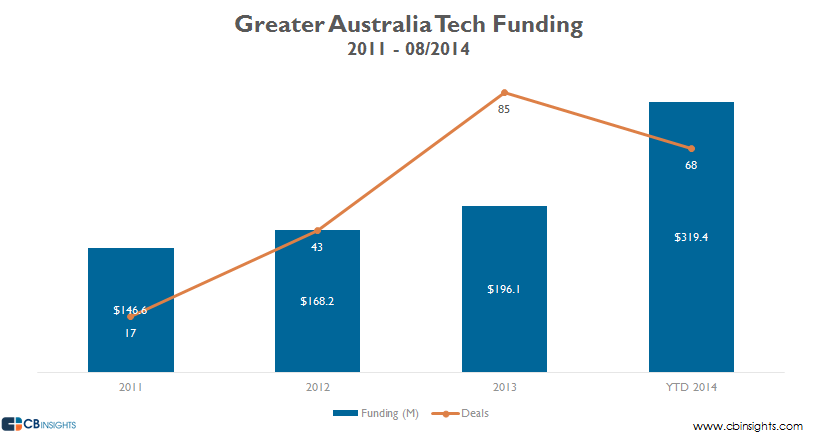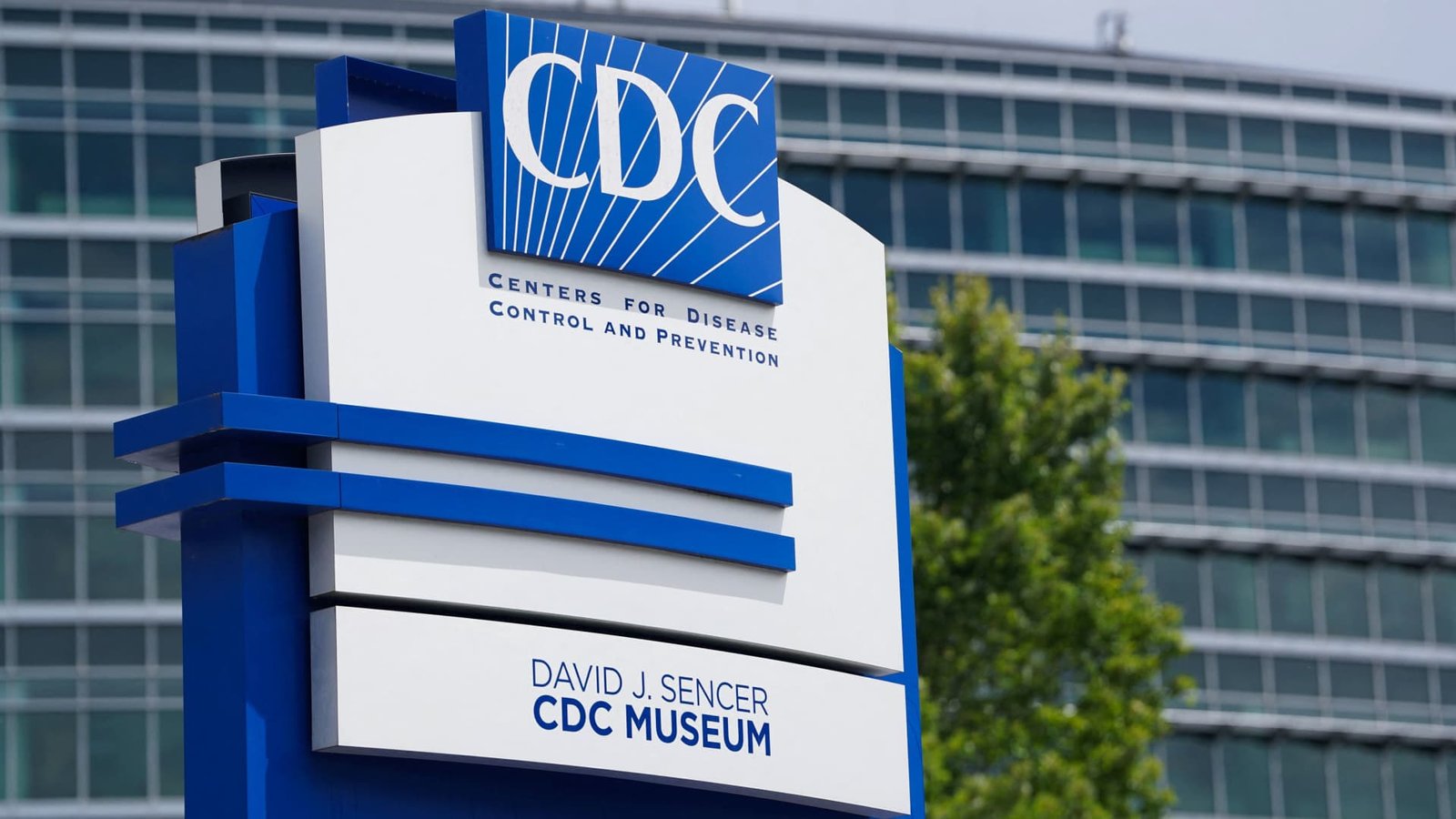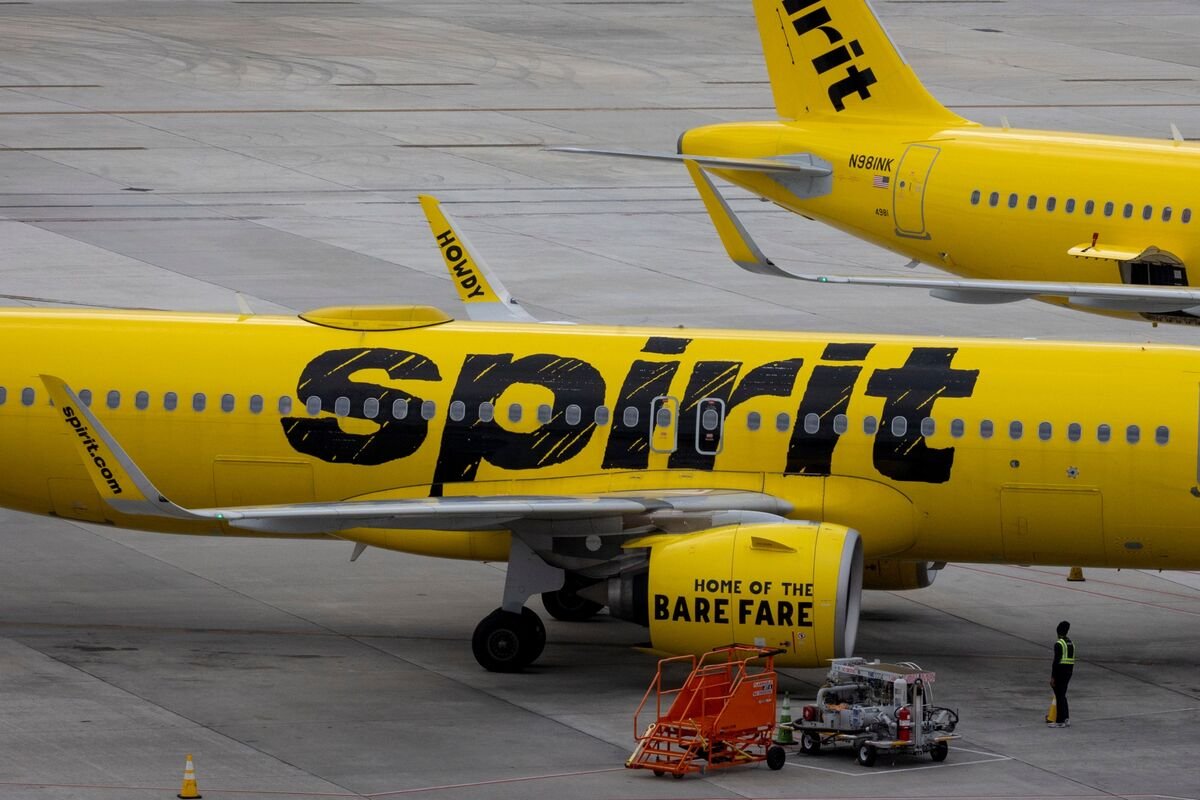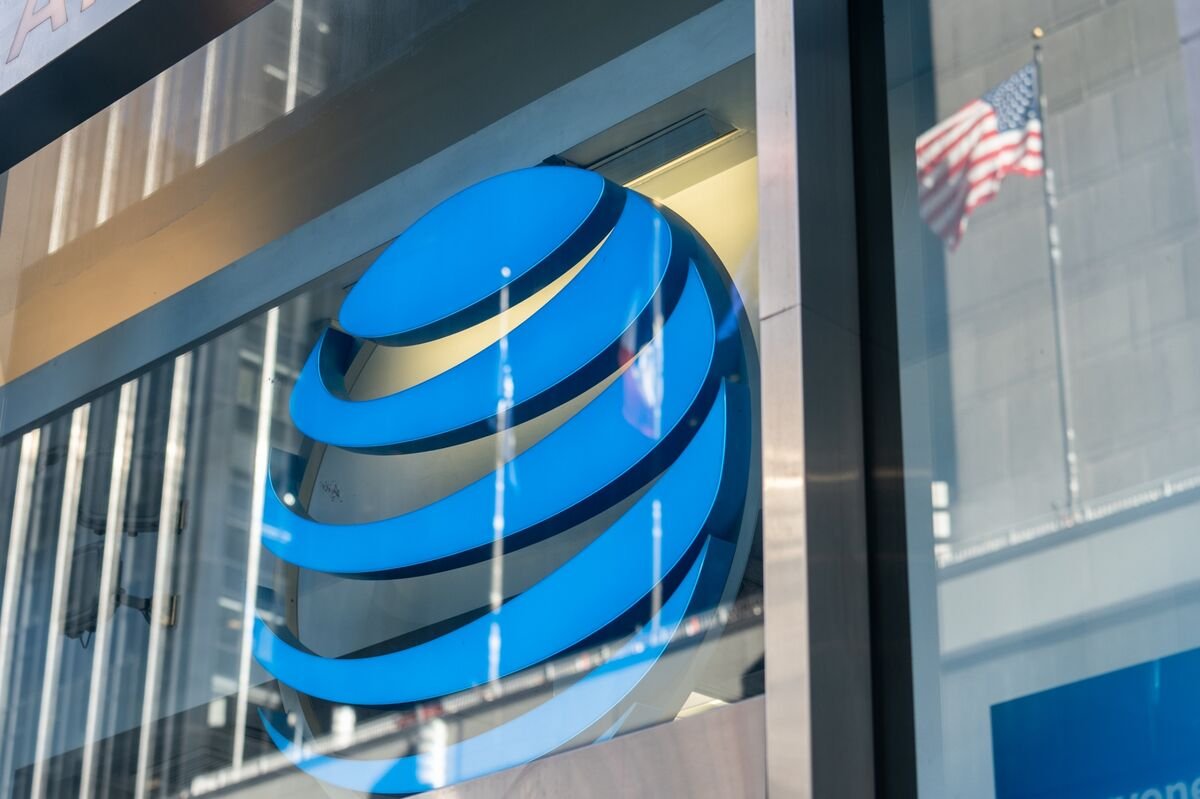Funding & Business
Australia Tech Startup Funding Hits Record. But It’s Not Good News.

Greater Australia (Australia/New Zealand) tech companies have raised 61% more funding in the first 8 months of 2014 than all of 2013. On the surface this paints a picture of a flourishing tech scene, but diving deeper into the data, that picture isn’t so great.
YTD 2014 has been helped by the largest funding in Greater Australia over the past 3 years into Campaign Monitor which raised a $250M Growth Equity round backed by Insight Venture Partners and Accel Partners. Campaign Monitor is a Sutherland-based email marketing company. This was the first round of financing Campaign Monitor has raised, despite being previously contacted by a patient Insight Venture Partners five years prior in 2008. If this round is removed, Australia tech is actually on pace to have its worst year since 2011 with just $92 million invested in the market.
While the 2014 funding picture is in reality, not so promising, total deals are actually on pace to slightly increase from the 2013 peak of 88 to over 90 in 2014. This growth in deals largely stems from many seed and angel investments where there is solid growth.
Australia Missing Mid to Late-Stage Capital
Incubators, accelerators, and angel investors have proven relatively plentiful in Australia and its surrounding parts versus but mid to late-stage financing options remain few. Sydney-based startup advisor Greg Twemlow said this about Australia’s startup scene:
“In splitting my time between Sydney and San Francisco, I’ve identified a lack of capital for mid and late-stage start-ups as a major hurdle for young Aussie companies that have managed to secure incubator or angel investment.”
CB Insights data confirms this. Early-stage investments have dominated financings since 2011 with 82% of deals coming pre-series B, and of all early-stage deals, only 16% were series A financings. In fact, since 2011 there have been less than 20 mid-stage (series B/C) deals total in tech, with 2013 accounting for a bulk of the mid-stage deals.
Project Management & Education Lead All Sub-Industries
The majority of tech deals in the Greater Australia region since 2011 have come in Internet & Mobile companies. When diving deeper into sub-industries, Collaboration & Project Management startups saw the most deals as multiple early-stage investments were made in the space over the past few years including three rounds of financing for Canva, which has raised over $8M from investors including Founders Fund, Shasta Ventures,and InterWest Partners, among others. Education & Training companies saw the second highest number of deals over the time period, with Smart Sparrow raising two rounds including a $10M Series A from UniSeed, OneVentures, Yellow Brick Capital.
On the Mobile front, Advertising Sales & Marketing and Location-Based & Navigation companies led, with companies like Posse and Tapit each raising multiple rounds of financing since 2011.
Where Are Investors Coming From?
When Canva went to raise their series A round funding, many speculated that they were forced to go overseas due to the lack of institutional investors within Australia. After eventually closing the $3.6M round with 4 of the 5 investors from the US, it seems that speculation was right. The data further proves this, as 43% of all institutional (non-angel) investors in Greater Australia Tech deals since 2011 were US-based, while just 38% were local. This figure compares poorly to Berlin and London which had 64% and 59% local investor participation respectively.
What’s Next?
Many have wondered if poor VC returns and lack of later-stage investors will ultimately doom Australia’s tech scene. With the region’s hottest company and eventual tech IPO candidate Atlassian, which was recently valued at $3.3B, and the two latest VC-backed tech IPOs (Freelancer.com, OzForex) all lacking local investors, it’s clear that the mid- and late-stage funding gap will need to be filled by non-Australian investors for the time being.
If you want to track Australia’s venture capital activity, create a free account below to the CB Insights venture capital database. If you have an account login.
Photo Credit: Hai Linh Truong // Flickr
If you aren’t already a client, sign up for a free trial to learn more about our platform.
Funding & Business
CDC asks all staff to return to office Sept. 15 after HQ shooting

A sign for the CDC sits outside of their facility at the Centers for Disease Control and Prevention Roybal campus in Atlanta, Georgia, U.S., May 30, 2025.
Megan Varner | Reuters
The Centers for Disease Control and Prevention told staff it expects them to return to offices by Sept. 15, roughly five weeks after a gunman’s deadly attack on the agency’s headquarters in Atlanta, CNBC has learned.
“Your safety remains our top priority. We are taking necessary steps to restore our workplace and will return to regular on-site operations no later than Monday, September 15,” Lynda Chapman, the agency’s new chief operating officer, said in an email sent Thursday that was viewed by CNBC.
Chapman said all staff will be expected to return to their offices by that date, according to the email. For employees whose workspaces remain impacted by the shooting — including physical damage from the gunman’s attack — the CDC will provide alternative spaces on its campus, Chapman wrote in the email.
She said the agency has made “significant progress” on repairs at the CDC Roybal Campus in Atlanta. CDC leadership and a “Response and Recovery Management” team are working to address staff concerns and ensure a safe environment as the agency transitions back to in-office work, Chapman added.
CDC staff had been instructed to work remotely following the Aug. 8 shooting, with options to return to the office in the weeks that followed, according to two people familiar with the matter, who requested anonymity for fear of retribution for speaking to the media.
The Department of Health and Human Services did not immediately respond to a request for comment.
The internal announcement comes at a tumultuous time for the CDC and its workforce. The shooting didn’t result in injuries among CDC staff but shell-shocked a workforce that was already reeling from sweeping changes under HHS Secretary Robert F. Kennedy Jr., including staff cuts and heated controversy over his efforts to change CDC immunization policies and fire the agency’s panel of vaccine advisors.
The return-to-office guidance also comes as the CDC grapples with a leadership upheaval: The White House earlier this week said President Donald Trump had fired the agency’s director, Susan Monarez. Four other top officials resigned, some of them citing the politicization of the agency and a threat to public health.
Authorities identified the gunman behind the shooting at CDC headquarters as Patrick Joseph White and said they recovered five guns and more than 500 shell casings from the scene. During the attack, agency employees were forced to barricade themselves in offices.
White fatally shot a responding police officer, 33-year-old David Rose, and then killed himself. White had blamed the Covid-19 vaccine for making him depressed and suicidal.
Before her firing, Monarez appeared to directly blame the role of misinformation in the shooting, according to an email sent to staff on Aug. 12 that was viewed by CNBC.
In the note, Monarez said, “the dangers of misinformation and its promulgation has now led to deadly consequences. I will work to restore trust in public health to those who have lost it- through science, evidence, and clarity of purpose. I will need your help.”
Funding & Business
Spirit Airlines Bankruptcy Tees Up Painful Cuts in Survival Bid

Spirit Aviation Holdings Inc.’s second bankruptcy filing in a year signals that the low-cost carrier is finally facing up to the painful steps needed to ensure its survival.
But its board faces daunting challenges on the path ahead, including how to downsize its fleet of leased aircraft while managing the roller coaster market conditions for US air travel that complicate the prospects for a long-term recovery.
Funding & Business
Rising US Corporate Debt Ahead With $1 Trillion in Deals

US companies are poised to boost their debt levels to help fund a $1 trillion wave of acquisitions, a reversal after years of scaling back their borrowings.
Keurig Dr Pepper Inc. this week said it’s buying coffeemaker JDE Peet’s NV and funding the deal with a €16.2 billion ($19.0 billion) bridge loan. AT&T Inc. said on Tuesday it’s buying spectrum licenses from EchoStar Corp. for about $23 billion, a move that will probably be at least partly funded with bonds.
-
Tools & Platforms3 weeks ago
Building Trust in Military AI Starts with Opening the Black Box – War on the Rocks
-

 Ethics & Policy1 month ago
Ethics & Policy1 month agoSDAIA Supports Saudi Arabia’s Leadership in Shaping Global AI Ethics, Policy, and Research – وكالة الأنباء السعودية
-

 Events & Conferences3 months ago
Events & Conferences3 months agoJourney to 1000 models: Scaling Instagram’s recommendation system
-

 Jobs & Careers2 months ago
Jobs & Careers2 months agoMumbai-based Perplexity Alternative Has 60k+ Users Without Funding
-

 Funding & Business2 months ago
Funding & Business2 months agoKayak and Expedia race to build AI travel agents that turn social posts into itineraries
-

 Education2 months ago
Education2 months agoVEX Robotics launches AI-powered classroom robotics system
-

 Podcasts & Talks2 months ago
Podcasts & Talks2 months agoHappy 4th of July! 🎆 Made with Veo 3 in Gemini
-

 Podcasts & Talks2 months ago
Podcasts & Talks2 months agoOpenAI 🤝 @teamganassi
-

 Jobs & Careers2 months ago
Jobs & Careers2 months agoAstrophel Aerospace Raises ₹6.84 Crore to Build Reusable Launch Vehicle
-

 Mergers & Acquisitions2 months ago
Mergers & Acquisitions2 months agoDonald Trump suggests US government review subsidies to Elon Musk’s companies

